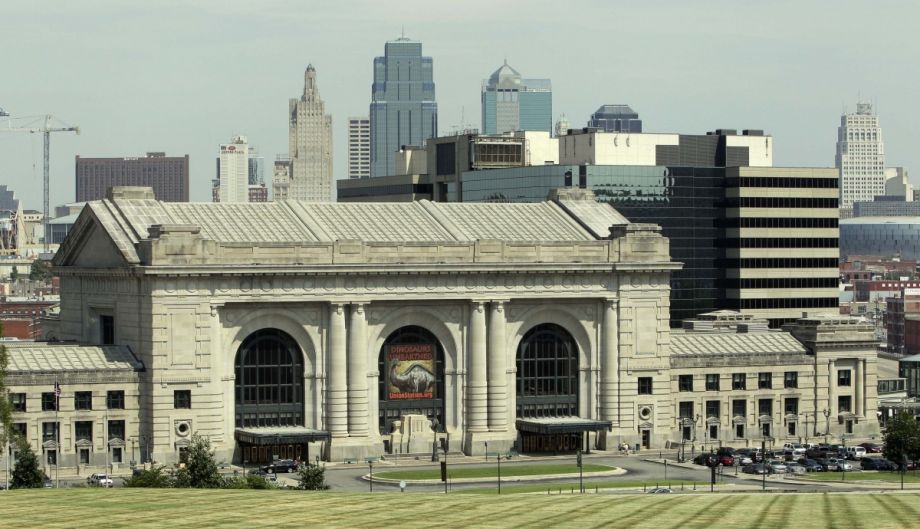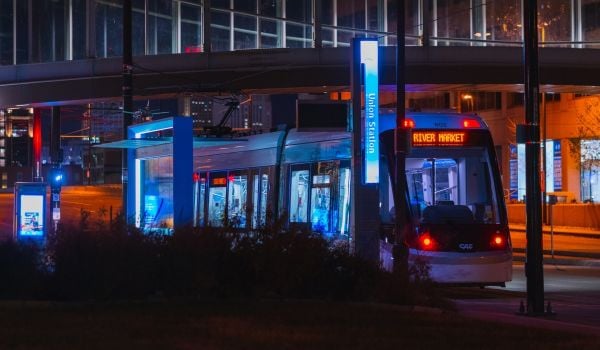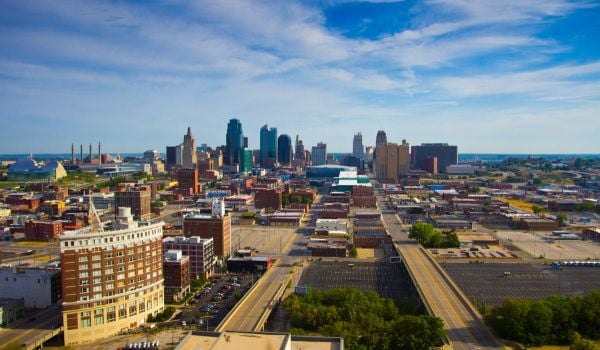Our weekly roundup of new and newsworthy transportation projects around the world.
D.C. Residents Fight Train Tunnel Project
CSX Transportation is looking to begin work on a project that would eliminate a bottleneck on its main north-south East Coast freight route by the end of this year. The Federal Highway Administration and the District of Columbia Department of Transportation approved on June 13 a final environmental impact statement (EIS) that clears the way for the railroad to seek the permits needed to begin a project that will replace a 110-year-old, deteriorating railroad tunnel beneath Virginia Avenue SE in Washington with two new, taller tunnels capable of accommodating double-stack trains.
The Washington Post reports that the project would proceed in two stages. First, a new single-track tunnel will be built parallel to the existing tunnel. Once that tunnel is complete, traffic would shift to it while the original tunnel is demolished and rebuilt. CSX touts the design as improving safety by isolating each track in its own tunnel, thus preventing derailments from fouling the adjacent track. The final EIS recommends this plan, which has a price tag of $170 million.
District officials have already okayed CSX’s closing the six-block stretch of Virginia Avenue beneath which the tunnel runs for the construction project. But the street’s residents are fighting the project on safety grounds and claims that the construction will reduce their property values. According to the report, “Residential, office and commercial development in the area has boomed over the past decade, and although residents concede that they knew the rail line was there when they moved in, trains were hidden by the tunnel.”
They will be again once the construction is complete.
Streetcar Advocate Wins Another Round in K.C. Battle
The 2.2-mile downtown streetcar starter line in Kansas City, Mo., isn’t even finished yet, and already the city is talking about extending it. But the prime mover behind the New Start That Refuses to Go Away has other ideas.
Clay Chastain, the electrical engineer-turned-transit activist who hasn’t given up on a vision of a multi-line light and commuter rail network for Kansas City even though he no longer lives there, just won a round in his battle with City Hall in court — and the victory means voters may face two competing transit tax proposals on the ballot in November.
A Jackson County circuit judge ruled on June 13 that Chastain’s latest sales-tax proposal for his regional rail transit plan should appear on the ballot, but that the city should write the language for the ballot question. The city refused to place the question on the ballot when Chastain collected enough signatures to put it there in 2011 because it said the three-eighths-cent sales tax Chastain proposed would not raise enough money to build his system and was therefore unconstitutional. The Missouri Supreme Court ruled otherwise in February, saying the ballot question did not require the city to actually build the system.
According to the Kansas City Star, Chastain’s plan calls for 22 miles of light rail, a 19-mile commuter rail line and a 9-mile streetcar line, all of which would use the city’s landmark Union Station as a hub. (Chastain, by the way, claims to be the prime force behind saving that building for the future.) The city’s proposal calls for expanding the boundaries of the taxing district created to finance the streetcar line; if that passes in August, the city would ask voters in the district in November to approve a tax increase that would pay for a $472 million project that would add eight miles of track to the 2.2-mile streetcar line along with a new 9-mile-long, $43 million bus rapid transit line along a busy East Side thoroughfare, Prospect Avenue. Chastain hasn’t put a price tag on his system.
Chastain’s doggedness has won him a strange mix of respect and disdain in the local press. But to date, he is the only person to have succeeded at getting voters citywide to approve a light rail sales tax. That happened in 2006. The city refused to implement the tax because it said it would not raise the funds needed to build the system, opting instead to pursue the streetcar project now nearing completion.
Improving Manila’s Water Supply With Public-Private Partnership
The Philippine capital region will have a more reliable water supply thanks to two public-private partnership projects being put out for bid by the Benigno Aquino administration.
One project, the New Centennial Water Source-Kaliwa Dam Project (NCWSP), will build a new dam and reservoir capable of supplying 600 million liters of water a day to Metro Manila and surrounding provinces and a water supply tunnel that can carry 2,400 million liters of water a day, plus supporting infrastructure, at a cost of $416.1 million. The new dam and reservoir would ease the pressure on the Anagat Dam, currently Manila’s sole water storage facility.
The other, the Bulacan Bulk Water Supply Project (BBWSP), will build water treatment facilities for water supply districts in Bulacan province. It will cost $542.22 million.
The Metropolitan Waterworks and Sewerage System held a forum earlier this month in order to gather ideas on how to make the projects a success. Its director, Cosette Canilao, told Rappler that the capital-intensive nature of water projects made them prime candidates for build-operate-transfer agreements of the type being pursued for these two. “It is in this light that PPP is considered as a viable option in undertaking water projects. Through PPPs, private sector efficiency and technology are maximized to realize high-impact projects directly benefitting the public,” she said.
The Works is made possible with the support of the Surdna Foundation.

Next City contributor Sandy Smith is the home and real estate editor at Philadelphia magazine. Over the years, his work has appeared in Hidden City Philadelphia, the Philadelphia Inquirer and other local and regional publications. His interest in cities stretches back to his youth in Kansas City, and his career in journalism and media relations extends back that far as well.
Follow Sandy .(JavaScript must be enabled to view this email address)



_600_350_80_s_c1.jpg)













